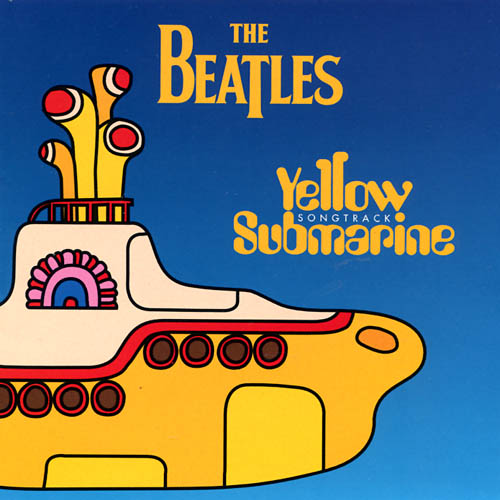
Yellow Submarine (Songtrack) (1999)

1.Yellow Submarine 2.Hey Bulldog 3.Eleanor Rigby 4.Love You To 5.All Together Now 6.Lucy in the Sky with Diamonds 7.Think For Yourself 8.Sergeant Pepper's Lonely Hearts Club Band 9.With a Little Help From My Friends 10.Baby You're a Rich Man 11.Only a Northern Song 12.All You Need is Love 13.When I'm Sixty-Four 14.Nowhere Man 15.It's All Too Much
In 1999, faced with a post-Anthology landscape and seemingly nothing left in the vaults, Apple Corps and EMI devised yet another way to repackage the Beatles legacy: a reissue tied to the remastered re-release of the psychedelic animated film Yellow Submarine. But this wasn’t merely a remaster—it was a reconfiguration. Gone was George Martin’s original orchestral score. In its place: a new tracklist comprising every Beatles song used in the film, newly remixed and polished to modern standards. The result? Yellow Submarine Songtrack—a curious hybrid of compilation, soundtrack, and reinterpretation.
The original 1968 LP had always been an outlier in the canon: part-album, part-score, part-contractual obligation. Just four new tracks—all of decent caliber—shared side A with recycled hits, while side B was devoted entirely to George Martin’s orchestral compositions. Enjoyable as those pieces were, the album never achieved the reverence of its chronological neighbors. It didn’t help that the film included far more Beatles material than the LP suggested—creating, for many fans, a disconnect between what they saw and what they heard.
Enter the Songtrack. With Martin’s score excised, the revised edition presents a fuller portrait of the Beatles’ contribution to the film. The four original songs remain—Only a Northern Song, All Together Now, Hey Bulldog, and It’s All Too Much—each a strange gem in its own right, and all vastly improved by the remixing. Hey Bulldog, once obscured in the US release, finally takes center stage, snarling with newfound clarity. Likewise, It’s All Too Much—long dismissed as meandering—emerges as a swirling, hypnotic epic, perhaps the most underappreciated track of the band’s psychedelic era.
To fill out the disc, eleven other tracks from 1965–1967 were added—Nowhere Man, Lucy in the Sky with Diamonds, Eleanor Rigby, and others—all featured in the film but not on the original LP. Thematically and sonically, these selections blend well. This is the Beatles at their most imaginative, most surreal. The remixes, bold and meticulous, strip away the murk that time and tape had layered onto the original stereo mixes. Instruments sparkle, harmonies float with pristine separation, and Ringo’s drums—often buried in the original pressings—punch with newfound confidence.
Still, the album poses a philosophical question: should the past be polished? Purists may bristle at the modern remixing, arguing that this isn’t how the songs were meant to be heard. Yet for the uninitiated, or even the open-minded enthusiast, this is perhaps the most accessible gateway into mid-period Beatles—the color, the confidence, the creativity, all dialed up for contemporary ears.
In the end, Yellow Submarine Songtrack is not an essential entry in the Beatles discography, but it is a fascinating one. It offers no new material and no dramatic revelations. But it does provide a welcome recontextualization—an imaginative reassembly of the band’s more whimsical moments, unencumbered by symphonic distractions.
For the casual fan, it’s a generous sampler of the Beatles at their most vivid. For the completist, it’s another necessary variation. And for those somewhere in between, it’s a psychedelic postcard from a band who made even their leftovers worth revisiting.